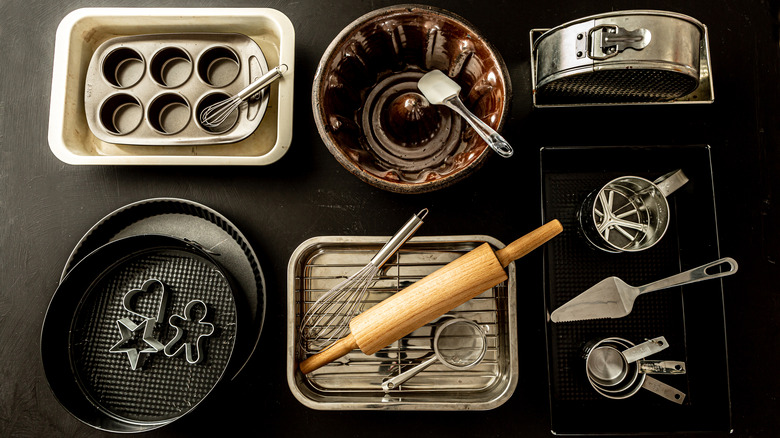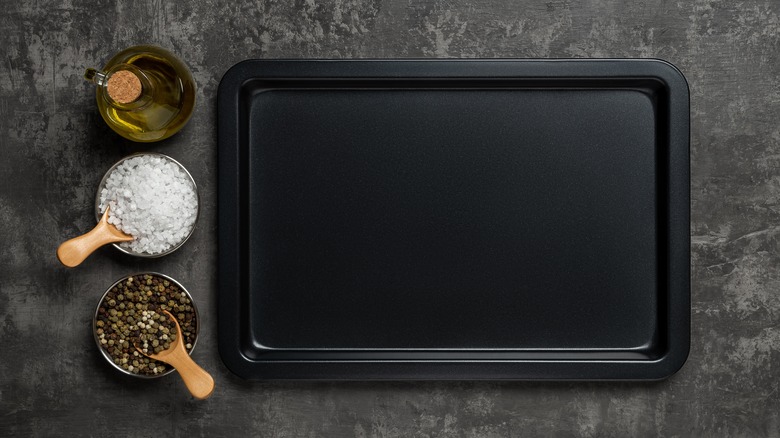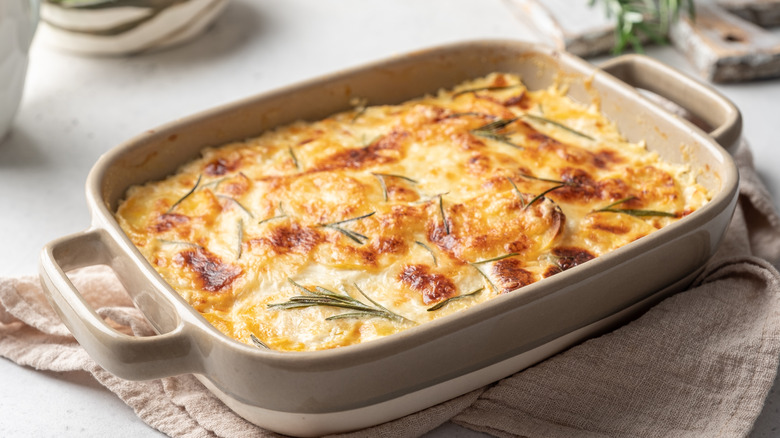Is A Baking Dish The Same Thing As A Baking Pan?
Confusing a baking pan and a baking dish can muddle any kitchen project. Returning to the basics and learning your dishware's names and functions can bring more ease to your next baking experience.
The most important thing to keep in mind, writes Made In, is that baking dishes and baking pans aren't interchangeable. Knowing the difference between the two and when each one works best ensures you use the best baking vessel for your recipe.
According to Taste of Home, the quickest way to tell the difference between a baking pan and a baking dish is by their material. Baking pans consist of metal, usually, aluminum or nonstick, and, occasionally, silicone, explains Southern Living. On the other hand, baking dishes are typically porcelain, ceramic, or glass, notes Cook's Info. However, the differences don't end there. Knowing the other characteristics of baking pans and dishes will help you select the correct container if a recipe doesn't specify which to use.
Identifying the Right Baking Pan
The definition of a baking pan is fairly broad. The term baking pan can include metallic cake pans, bread pans, and other pans in different sizes and shapes. A baking pan's specific purpose often determines its shape, such as quiche pans, meatloaf pans, muffin tins, and bundt pans, explains Cook's Info. Typical shapes for baking pans also include round, square, rectangular, sheet pans, loaf pans, or tube pans, writes Southern Living.
Knowing what foods work best in baking pans is helpful when you don't have clear directions. Use a baking pan for any recipe that doesn't have a lot of acidic ingredients and where you want to get some brown color. Think projects ranging from cakes to roast vegetables, says Taste of Home
Some bakers argue that a true baking pan is what many might call a baking sheet or baking tray. One can identify a sheet pan by its metal material and characteristic shape: rectangular and low-edged notes Made In. Cookie sheets are even more specific, with raised edges on only two sides to help slide the cookies onto a cooling rack (per Southern Living).
Identifying Baking Dishes
Most commonly, you can identify baking dishes – sometimes called casserole dishes –- by their depth. Typically, they're around two inches deep, says Made In. Because of that, recipes that require wide pans with a few inches of depth, such as casseroles, enchiladas, or cobblers, usually call for baking dishes, says Taste of Home. Furthermore, their porcelain or glass material makes them better at handling acidity from ingredients like fruit, as opposed to the baking pan. Most frequently, baking dishes are rectangular. However, they can also be square or oval.
Baking dishes are a versatile asset to your kitchen. All are oven-safe, many are microwave-safe, and often, they can double as serving dishes, notes Made In. Once you've identified your baking dish, it's important to remember that glass, ceramic, or porcelain can shatter when put into the oven cold. Be sure to get your baking dish to room temperature before putting it under the broiler or in an extra hot oven, cautions Taste of Home. If you don't have a baking dish and your recipe requires it, you can substitute a frying pan rather than a baking pan.


